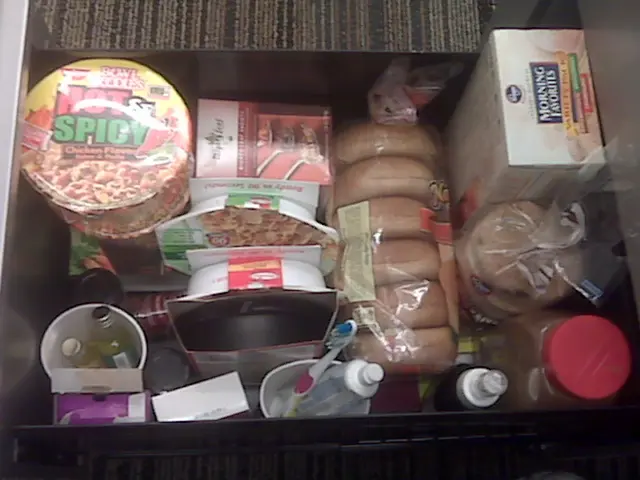Avoid allowing trivial driveway blunders to diminish your home's attractive facade.
Ready to steer clear of common driveway blunders? Your driveway is more than just an area for parking – it also impacts your home's overall kerb appeal. Since you want it to make a great first impression, here are the top driveway mistakes to avoid.
1. Disregarding Your Needs:Starting with proper planning is essential. Failing to consider how you'll use the new driveway area can lead to designs that are impractical or detract from your home's appeal. Before designing, ask yourself questions like the number of vehicles, preferred vehicle types, budget, DIY or professional installation, and the need for planting areas or privacy features.
2. Skipping Preparation:A driveway's success lies in proper planning and preparation. Without adequately preparing the ground, substandard materials can cause issues down the line, such as sinking, erosion, or overgrowth. Choose a robust crushed aggregate sub-base, and if you're going for gravel, layer a weed membrane underneath for reduced maintenance.
3. Ignoring Drainage Requirements:Drainage is crucial for a sturdy driveway, especially during wet weather. Properly designed drainage measures like soakaways or permeable paving can help prevent standing water, structural damage, and erosion. Depending on slope and preferred style, hardwearing drains or channels can also be incorporated for improved water management.
4. Choosing the Wrong Size:Ensure your driveway can accommodate your vehicles comfortably, considering car sizes, door opening space, and maneuverability. For ideal sizes, consider a single car driveway of 3m wide x 4.8m long, and a two-car driveway of at least 4.8m wide x 4.8m long. Remember to also consider accessibility, such as wheelchair access.
5. Skimping on Materials:Quality materials may cost more upfront but can save you time and money in the long run by reducing maintenance and potential replacements. Opt for durable and attractive materials like concrete block paving, permeable pavers, crushed stone, or stable gravel types.
6. Assuming Planning Permission Isn't Needed:While planning permission is not always mandatory, never assume this without checking first. Many factors, such as house type, location, front garden elimination, and property type, can influence your need for planning permission. To avoid any potential issues, consult your local planning office before beginning any work.
7. Forgetting a Dropped Kerb:Creating a new driveway from scratch or converting a front garden often requires a dropped kerb for easy vehicle access. Applying to your local highway authority for a dropped kerb or domestic vehicle crossing license is necessary before starting any digging.
8. Inadequate Installation:Professionally installed driveways yield the best results. Seek out accredited installers with a good reputation and a network of expertise for a top-quality driveway. For DIY installation enthusiasts, thorough research on materials and techniques like gravel, edging, and compaction is crucial.
By being mindful of these common mistakes, you'll be on your way to owning a sturdy, visually pleasing driveway that will boost your home's curb appeal and last for years to come.
1. In the planning phase, it's crucial to consider your lifestyle, the number of vehicles, preferred vehicle types, budget, and any necessary features like planting areas or privacy elements, all of which can impact the design of your driveway.
2. Neglecting proper ground preparation before installation can result in future problems such as sinking, erosion, or overgrowth, as improper preparation can compromise the success of your driveway.
3. Ignoring proper drainage measures can lead to standing water, structural damage, and erosion, making it essential to include soakaways, permeable paving, or appropriate drains and channels in your planning.
4. Opt for driveway sizes that can accommodate your vehicles comfortably, ensuring a minimum width of 3m for a single car and at least 4.8m for a two-car driveway, keeping in mind door opening space, maneuverability, and accessibility.
5. Choosing lower-cost, less durable materials may save you money upfront, but could lead to increased maintenance and potential replacement costs down the line. Opt for long-lasting, attractive materials like concrete block paving, permeable pavers, or stable gravel types to minimize maintenance.
6. Always check if planning permission is required before starting work, as factors such as house type, location, front garden elimination, and property type can influence the need for such permission.
7. If constructing a new driveway or converting a front garden, a dropped kerb or domestic vehicle crossing license is necessary for easy vehicle access.
8. For the best results, hire accredited installers or diligently research materials and techniques if planning a DIY installation, focusing on aspects like gravel, edging, and compaction.
Embrace these tips to create a sturdy, appealing driveway that enhances your home's curb appeal and adds value for years to come. Additionally, don't forget to check local regulations regarding fashion-and-beauty elements like landscaping and home-and-garden features in your driveway design.





